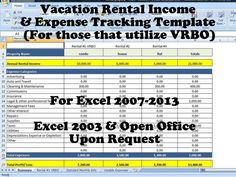Content

Even if your company is profitable, you can still be at risk of falling into financial demise. Ultimately, cash flow and net profit measure different things. While profit is the goal – and an indicator of financial health – cash flow is the lifeblood of an organisation, keeping operations ticking over on a day-to-day basis. For a growing business, both cash flow and net profit are important, but in the short-term, cash flow is probably the number one concern. The profit made by your company after all other costs, including taxes and operating expenses (rent, payroll, etc.) have been deducted.

Since NOCF” exceeds the priority outflows at the same time, the cash balance rises. As sales start to decline, both EBIT and NIPD also fall but at a faster rate because of the financial and operating leverage used. As sales start up, EBIT and NIPD respond in kind before leveling off. When you see that your company is cash flow-positive, you might be quick to assume that your business is profitable, but don’t pop the champagne just yet! While the cash flow and profits of your business are closely related, they are not technically the same thing.
Understanding the critical differences between profit and cash flow
Unlike a Profit and Loss statement, cash flow includes cash growth that isn’t strictly profit, like capital injections from owners or investors, or money from the sale of an asset. Similarly, it doesn’t include credit from suppliers, money owed from customers, or money you already have in the bank. Cash flow is the amount and timing of the payments you receive and the expenses that you pay. Specifically, when the money is actually deposited into your bank account or given to you as cash it can be counted as an inflow in your cash flow. A business may have revenue in a given time period that includes invoices they have sent out to customers, as well as cash payments that have been made at the time of a purchase.
Is cash flow a good thing?
Why is cash flow important? Cash flow is important because it enables you to meet your existing financial obligations as well as plan for the future.
Managing cash flow and profit margins means measuring, monitoring, and making a plan to meet your goals. The easiest way to do all of the above is to create a financial forecast.
Does positive cash flow mean a business is profitable?
Looking at the graph above, as sales start to drop for the manufacturing company, the three different accounts receivable turnover rates affect the cash balance in different ways. Most interesting, however, is the fact that the cash balance returns to the same amount when https://online-accounting.net/ the accounts receivable turnover rates also become equal. The graphs throughout this article give the simulation results. When you have these two numbers, subtract your total cash outflow from your total cash inflow to determine the annual cash flow of your business.
- As you can see, the key difference between your cash flow balance and profitability is that cash flow represents actual In/Out funds in a given period.
- Can help you better understand the ebbs and flows of money in and out of your bank account and can help you make smart financial decisions to ensure you don’t suffer a cash crunch.
- The tools and resources you need to run your business successfully.
- I recently gave a talk on cash flow to an industry trade group association and let one of my sample companies run out of cash—and crash.
- Most P&L statements include net profit or loss in the first line of the report, which is what cash flow calculates.
” It doesn’t matter whether your industry is high tech or low, smokestack or service. In the end, you need to have enough money to pay your obligations or you’ll go out of business. However, since both your cash flow and profits play a huge role in the survival of your business, it is extremely important that you understand how they actually differ. FINPACK’s credit analysis tools can assist with analyzing business profitability and cash flow.
When to Use Net Income vs. Free Cash Flow
This $1,000 will be recorded on your profit and loss statement as a profit—even if you don’t receive payment for said invoice right away. Most importantly, you can use Spotlight Forecasting to ensure ideal profit margins, and identify periods of low cash flow so you can compensate accordingly. It’s like being able to look into Cash Flow or Profits the financial future—without the hassle of a crystal ball. You can use our three-way forecasting software to project your future cash flow, budget, and profit and loss, so you can stay prepared for whatever lies ahead. You can also create a range of scenarios and put together a plan of action for different eventualities.
- Profit, also callednet income, is what remains from sales revenue after all the firm’s expenses are subtracted.
- Profit is the income created by your business minus the expenses incurred generating that income.
- You would look really good from a cash flow perspective until you had to pay those expenses.
- There are many profitable opportunities that require cash flow to capitalize on them.
Businesses using the accrual method of accounting must make some adjustments to determine your actual cash flow. The situation can usually be blamed on using cash for things that don’t show up on the income statement. Or it’s a function of the timing difference of when revenues and expenses are recognized in relationship to their collection and payment.
Business Insights
With the right strategy, you can capture both in the long term. The following example looks at the adjustments necessary to convert the accrual profits of Bug Busters Exterminating Service to its cash flow for its year ending December 31, 2011. A decrease in accounts receivable has the opposite effect — the decrease represents cash collected, but not included in income. A good way to learn respect for the concept of cash flow is to compare it to the idea of profit.
For accrual method taxpayers, an increase in the amount of notes payable must be added to your accrual net profits to determine the cash flow of your business. Under the accrual method of accounting, a loan is recorded by increasing the amount of cash received from the loan, and increasing the amount of notes payable. No part of this transaction is reflected in your accrual net profits.
Net Profit
Even though both are essential for a sustainable business, there is a critical difference between cash flow and profit. You will need to have some way to keep your business running, pay staff and expenses to until you receive those payments. Gaming your results on financial statements is easy if you used periodic cash flows to measure profit. For example, you could take in a lot of cash from sales but delay paying your expenses. You would look really good from a cash flow perspective until you had to pay those expenses.
Once you know how much you’re starting with, you’ll subtract all your operating expenses, investment activities, and financing activities. Remember, we are talking about your actual cash flow, so this will not include any unpaid debt or outstanding invoices. Similarly, a decrease in the amount of notes payable must be subtracted from your accrual net profits. Like the increase in notes payable, no part of the transaction to record a principal payment on a note payable is reflected in your accrual net profit. Therefore, it must be subtracted from your accrual net profit to determine the real effect on your cash flow. Without waging into the details of accrual accounting, understand that it is an essential tool for the financial management of your business. Primarily, it shows the performance of your business over a period of time by matching income and expenses.
